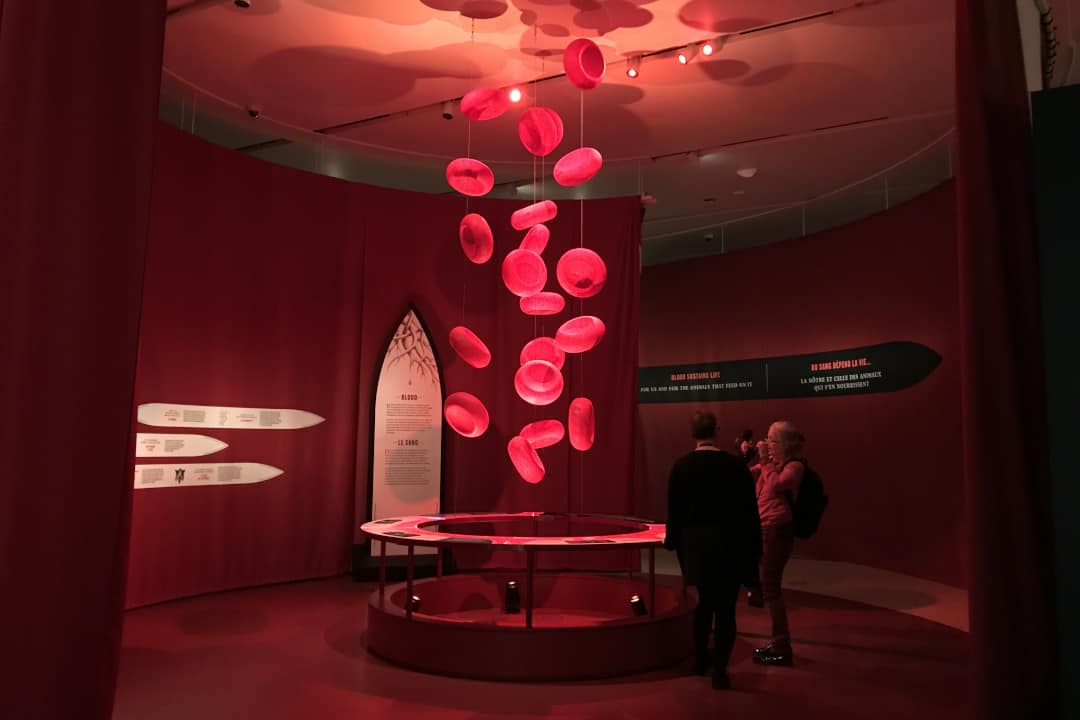I grew up around fist-sized flying cockroaches and swamp-fed mosquitoes, their ferocity matched only by agitated metropolitan geese. Bed bugs colour my nightmares and I’m scared of birds. The natural world has nothing to offer me, and yet even I found Bloodsuckers: Legends to Leeches captivating, albeit disgusting.
Bloodsuckers: Legends to Leeches showcases the diversity of blood-feeding animals — of which there are over 30,000 worldwide — with a particular emphasis on North American species.
The curators of the exhibit are Dr. Sebastian Kvist and Dr. Doug Currie, both professors at the University of Toronto’s Department of Ecology & Evolutionary Biology.
The impact of biodiversity on human society
Understanding biodiversity is key to tackling the climate crisis. Research into bloodsuckers reveals the complexity of these species and their historical, medicinal, evolutionary, and cultural merits.
Early medical practitioners used leeches for bloodletting — an antiquated medical practice where patients were bled to drain toxic substances from their body — a responsibility that was later adopted by barbers.
As explained by Kvist, barbers took up the blade after monks, who were practicing bloodletting in monasteries, were prohibited from performing the procedure. This eventually evolved into formal training for surgeon-barbers.
Traditional barber poles with red and white stripes indicated an availability of bloodletting, Kvist noted, and the basin at the top signalled the use of leeches in the process.
Bloodsuckers in popular culture
There were also several separate portions of the exhibit, dedicated to legend’s bloodsucking creatures, influences in Hollywood, and the effectiveness of practical repellants, among others. Kvist emphasized the importance of integrating cultural context into scientific research and the interplay between various subjects.
Popular belief, influenced by Bram Stoker’s Dracula, has led to the spread of inaccurate information — like the use of garlic as a mosquito repellant.
Conversely, mythical bloodsucking creatures like the vampire or chupacabra were likely inspired by misunderstood instances of blood-feeding creatures.
Creatures on display for public knowledge
The mosquito room is bananas. The sound of thousands of swarming mosquitoes surround listeners as they stand between the decorated panels. Nowhere else can such anxiety be felt in confined, air quality-controlled safety.
Glass displays filled with collections of living and preserved bloodsuckers also sit alongside the numerous interactive multimedia exhibits.
The first new leech species discovered in over 40 years, Macrobdella mimicus, was also on display. Kvist, who was part of the team that first uncovered it, explained to CBC News: “We’re hoping that down the line the knowledge of this new species will help us to find new anticoagulants or new blood thinners that these leeches have in their saliva and that might be of benefit.”
Medical experts can also use leeches to suck out congested blood and dilate blood vessels, and their saliva can numb pain as an anaesthetic.
Bloodsuckers runs until March 22 at the Royal Ontario Museum.


